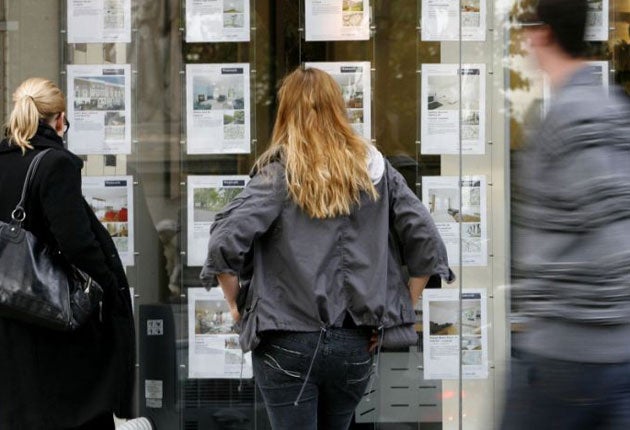Is shared ownership a solution or a shackle for first-time buyers?
Against a backdrop of rising property prices and a higher cost of living, the scheme looks like the obvious way to get onto that first rung. But is it?

We have run out of hyperbole to describe the gravity-defying, often nonsensical, twists and turns of the UK’s housing market over the last year. Today’s Budget may only add to the drama.
There’s little doubt that those hoping to join the ranks of owner occupiers have been hit hardest – by soaring prices, job loss, cuts to benefits and everything else the pandemic has thrown at them.
One way onto the ladder is via the government’s shared ownership scheme, often marketed as an easy and affordable way to own your own home.
On paper it is exactly that, a way for many people to own a home who wouldn’t be able to via the traditional route.
While the numbers buying through shared ownership are small, they’re not insignificant. In 2019-20, there were around 15.4 million owner-occupied homes, 54 per cent were owned outright, 45 per cent were bought with a mortgage, and just 1 per cent (202,000 properties) were in shared ownership, according to government data.
In October, every region of Britain saw record-breaking asking prices, with the national average price jumping £5,983 in a single month, according to Rightmove’s latest house price index.
The latest Land Registry Index, which is arguably the most reliable as it records actual house price sales, saw a 10.6 per cent yearly increase, putting the average house price at £264,244 for August.
Shared ownership is one option for those unable to save a lump sum of £30,000 which is currently the average first-time buyer deposit.
It’s aimed at first-time buyers, or those struggling to get onto the housing ladder.
When you buy a property, you own a percentage of it and repay a mortgage on this and pay rent on the remainder to a housing association or the private developer who owns the building.
You can then increase your share in the property when you can afford it, known as staircasing, although you do this based on its value at the time of increasing your share not the price it was when you first bought it.
There are schemes across the UK which work slightly differently. In England, for example, to be eligible your individual or combined income as a couple can’t be more than £80,000 (£90,000 in London).
However, while it sounds like the perfect solution for a first-time buyer, it can be expensive, complicated and you could even lose money if your property drops in value.
The cladding scandal which has blighted the housing market over the past few years has also cast a dark light on the shared ownership scheme as many flats bought through it have been affected.
When Michael Gove took over as housing secretary, reports emerged that he was considering a range of options to help those in homes affected by the cladding scandal and these may be addressed in today’s Budget.
One of the major downsides are the extra costs. Shared ownership homes are sold on a leasehold basis so while you own the property – such as the flat – you don’t own the land it’s been built on.
This means you’ll usually need to pay a service charge to whoever does own the land and you may have to ask permission to make changes to your home. You also usually can’t rent it out and may have to pay towards maintenance jobs required on the building.
Every time you staircase – or increase your share – you’ll also face changes which may include mortgage fees, stamp duty, and legal expenses.
Selling your home can also be tricky, especially if you don’t own all of it, and the housing association often has the first right of refusal to buy back the property before you’ve marketed it to anyone else.
The Home Owners’ Alliance also points out the lack of protection with a home bought via shared ownership. Just because it’s a government scheme, this doesn’t mean you get any more protection, it says. It also warns that costs can spiral, rents can increase overtime, and if you’re unable to pay, you could be evicted from the property.
However, while there are flaws to shared ownership, there are pros and cons of any house buying process.
This doesn’t mean you should avoid it altogether, and for many it will be the best, or only, option available. It can also be a far better choice than relying on the UK’s expensive, fragile and largely unsecure rental market.
David Hollingworth, spokesperson for London and Country, comments: “Although many first-time buyers will aspire to full ownership there could be an opportunity to get at least a toe on the ladder sooner by using shared ownership.
“Buying an affordable share now and paying an affordable rent on the remainder could be a great way to gain some exposure to the housing market and importantly greater security of tenure compared with renting.
“Like any buyer though, it’s important to be sure that the property is the right one to make a home for the longer run. That requires consideration over whether the property is the right kind of home for you, especially as shared ownership will be limited in property choice and availability depending on the housing association.”
Subscribe to Independent Premium to bookmark this article
Want to bookmark your favourite articles and stories to read or reference later? Start your Independent Premium subscription today.

Join our commenting forum
Join thought-provoking conversations, follow other Independent readers and see their replies